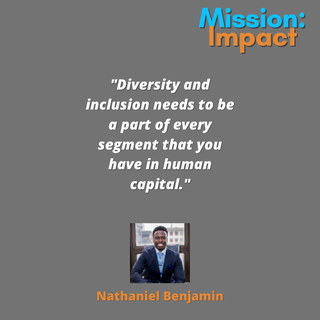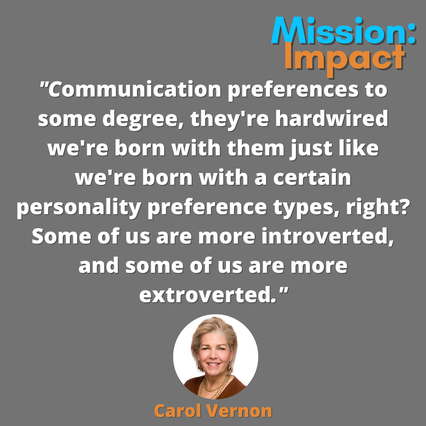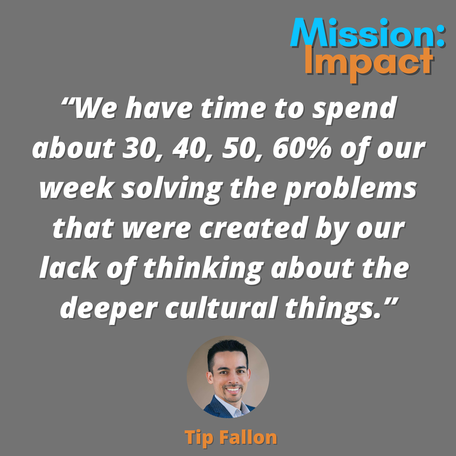Mission: Impact podcast & blog
Build a better world without becoming a martyr to your nonprofit cause
Listen on:
 In episode 35 of Mission: Impact, Carol, her cohost, Peter Cruz, and their guest, Nathaniel Benjamin discuss diversity, equity and inclusion and its intersection with human capital management. This episode is a release of a podcast Carol planned to start with her son-in-law and has many transferrable ideas and concepts to the nonprofit sector. We talk about:
Guest bio: Nathaniel Benjamin approaches the space of Diversity and Inclusion as not only a profession, but as a passion that’s taken hold of his life’s work. As a graduate of Johns Hopkins University, University of Baltimore and the University of Maryland Eastern Shore, his educational endeavors led him into a marketable career in Human Resources -- working in the C-suite level --managing workforce planning, strategy, policy and talent management. But to “really” understand how an organization works, he later found that you must understand its people… the diversity of those who make an organization thrive. He brings 17 years of experience as an organizational Change Agent and a D&I Strategist, ready to exceed your organizational needs. Contact: Nathaniel Benjamin:Peter J. Cruz: Click "Read More" for Transcript:  Episode 09: This week we’re talking to Carol Vernon We talked about:
Carol Vernon is a certified executive coach and principal of Communication Matters, an executive coaching firm that helps leaders and teams elevate their executive presence and communication skills in order to grow their impact. Carol was inspired to start Communication Matters after years of observing that doing your job well isn’t enough. Without executive presence and the ability to communicate effectively with diverse stakeholders, leaders can’t achieve their full potential or achieve the results they seek. Previously, Carol was the senior communications director at the National Cable and Television Association, as well as acting executive director of the cable industry’s education foundation, with both people management and budget responsibilities. Prior to that she worked on Capitol Hill and on more than a dozen political campaigns. Links: https://commmatters.com/ https://www.linkedin.com/in/carol-vernon-aa09833/ https://www.facebook.com/ComMatters/ Click "Read More" for Transcript:  This week we’re talking to Tip Fallon. We talked about: • the masks many people feel forced to wear or personas they assume in the workplace. • Why we need to do some preventative work to make things easier for people with targeted identities. • How we are the product of the history that has created systems of oppression, as well as creating history ourselves Tip Fallon is a coach and consultant who is passionate about working with people to reach their potential. He integrates both a strategic and analytical approach to solving problems with a human-centered focus, tending to people's motivations, group dynamics, and organizational culture. He brings over 15 years of change leadership experience and a background in business and engineering, nonprofit management, and a decade of coaching and consulting to clients in US-based and global organizations. He has served projects with organizations such as Annie E. Casey Foundation, American Institutes for Research, and the Nature Conservancy. The project Tip mentioned at the end of the interview has launched. Learn more about All In Consulting here. Links: https://www.linkedin.com/in/tipfallon https://www.fallonconsulting.net/ https://twitter.com/tipfallon Click "Read More" for Transcript |
Archives
April 2024

Grace Social Sector Consulting, LLC, owns the copyright in and to all content in and transcripts of the Mission: Impact podcast, as well as the Mission: Impact blog with all rights reserved, including right of publicity.
|
Telephone301-857-9335
|
info[at]gracesocialsector.com
|
Grace Social Sector Consulting, LLC, owns the copyright in and to all content in, including transcripts and audio of the Mission: Impact podcast and all content on this website, with all rights reserved, including right of publicity.
|